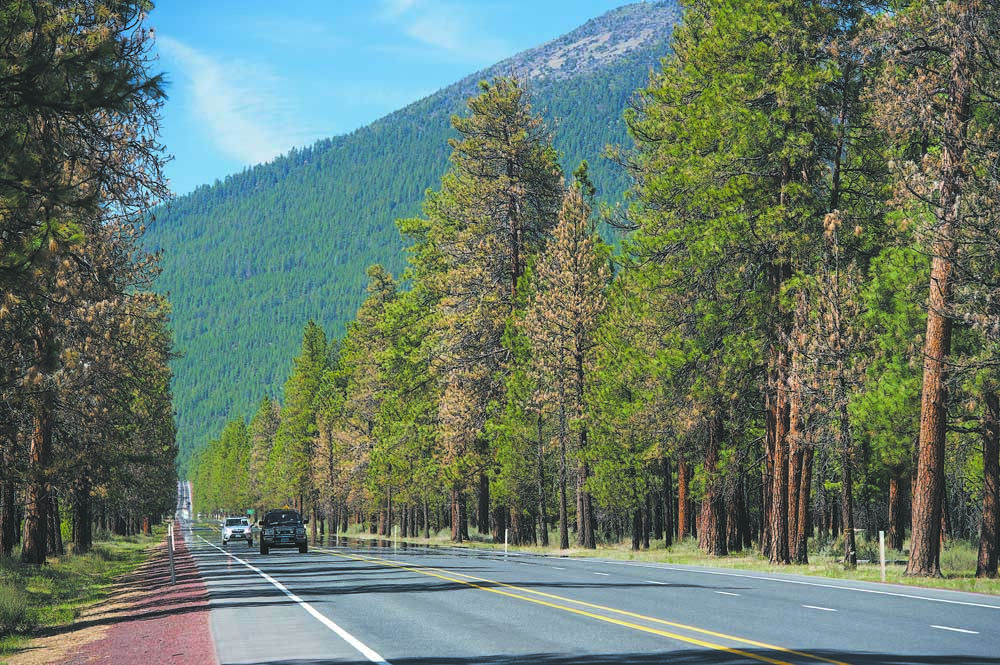Concerns raised about weedkiller near Sisters prior to use
Published 12:00 am Tuesday, July 31, 2018

- Ponderosa trees that are dead or dying line U.S. Highway 20 just west of Sisters in 2018.
Documents from the U.S. Forest Service and other public agencies show that many of them knew that Perspective — the weedkiller linked to hundreds of dead ponderosa pines outside of Sisters — may have been dangerous to the trees, and ultimately used it anyway.
Public records requested by the Bend-based environmental group Central Oregon LandWatch and shared with The Bulletin show that Debra Mafera, then the invasive plant program manager for the Deschutes and Ochoco national forests, raised concerns about the product as early as 2012.
Trending
Mafera, who retired from the agency in 2013, suspected the herbicide could be harmful to ponderosa pines and other trees in the area prior to the beginning of the three-year spraying project along U.S. Highway 20 that killed trees in the area.
“As you know, this stretch of road is well watched and well loved by the locals. We do not want any dead trees!” Mafera wrote in 2012.
Rory Isbell, staff attorney for Central Oregon LandWatch, said the organization’s goal in making the documents public was raising awareness about the project and why the weedkiller was chosen over objections from one of the agencies.
“LandWatch is concerned that those internal precautions weren’t followed,” Isbell said.
In 2012, the Oregon Department of Transportation, the Forest Service and Jefferson County Public Works, which was selected as a contractor, began planning a three-year effort to kill weeds along a 12-mile stretch of U.S. Highway 20 near Sisters, a common fire-prevention technique.
Perspective, then a relatively new herbicide produced by DuPont, was selected in early 2012 after a rival product was determined to have ingredients that weren’t approved by the Forest Service.
Trending
Several months later, however, Mafera expressed concerns about the herbicide, citing new language on the label that cautions against using the herbicide where ponderosa pines are present. She cautioned the other agencies against using Perspective, particularly in high concentrations near vulnerable trees. However, the product was selected in spite of her concerns.
Mafera said Monday that she didn’t know why Perspective was ultimately selected, and added that she didn’t know it was responsible for dead and dying trees near Sisters until earlier this year.
“We advised them not to use it,” Mafera said. “And the applicator needs to read the label.”
Over the ensuing three years, Forest Service employees slowly became aware of the impact from the herbicide. In late 2013, Brent Oblinger, forest pathologist for the Forest Service, emailed Bert Cregg, a professor at Michigan State University’s horticulture department, to ask about impacts from aminocyclopyrachlor, an active ingredient in Perspective. Oblinger said he reached out to Cregg in response to a separate spraying project outside Sunriver, where dozens of trees were harmed by Perspective.
Oblinger added that Cregg had looked into a separate incident, where a weedkiller with the same active ingredient contributed to the deaths of thousands of spruce and pine trees across the Midwest in 2011.
In December 2015, after Perspective had been linked to hundreds of dead and dying trees near Sisters, the Sisters Ranger District produced a document outlining the mistakes made, and how they could be prevented in the future. The document notes that applicators may not have fully appreciated how easily the weedkiller could be absorbed through a ponderosa pine’s root system. The document also states that several important employees retired or moved during the project window, making communication more challenging.
The Forest Service is planning to remove the dead and dying trees this fall or the following spring, but Oblinger added that the scope of the project may still be growing.
A Forest Service report from this spring notes that there are significantly more dying trees in the area than there appeared to be in 2015. Oblinger estimated that there are more than 1,000 dead or dying trees along the highway, compared to an initial estimate of several hundred three years prior.
“There will be some mortality, but I think most of the damage has already played out,” Oblinger said.
— Reporter: 541-617-7818, shamway@bendbulletin.com








